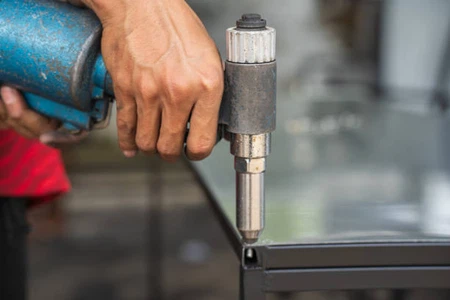Discover advanced CNC lathe technologies and ultra-precision machining methods that enhance accuracy, efficiency, and surface quality for various materials.




Finishing is a machining method used to achieve the dimensional accuracy specified in design drawings, product specifications, and part specifications. Compared to processes like “polishing” or “grinding,” it is a more precise machining state.
The highest precision of finishing can reach an accuracy of 0 to 0.01mm, achieving very minimal errors. However, machining cannot reach such high precision in one step. The finishing process mainly includes several stages: “rough machining,” “semi-finishing,” and “finishing,” each with its own characteristics and objectives.
Finishing is performed using specialized machines. The reason is that using the same tools and machines as in rough machining would affect the machine’s lifespan and machining accuracy due to different loads. Furthermore, high-precision machining is easily affected by environmental temperature, so it is best to use a dedicated production environment.
| Max.machining diameter | ø 16mm(5/8in)/ ø 20mm(25/32in) |
| Max. headstock stroke | 205mm(8in) |
| Max.drilling capability | ø 12mm(1/2in) |
| Processing material | 304, 316L, 17-4, Ni-Ti, L605 and Other Alloys |
| Number of tools | 4-10 tools(option is included) |
| Max.drilling capability | ø7mm(9/32in) / ø6mm(15/64in) |
| Max.tapping capability | M6×P1.0 / M5×P0.8 |
| Main Spindle speed | max.10,000min-¹ |
| Rapid feed rate | 35m/min(X1,Y1,Z1,X2,Z2) |
| Main spindle motor | 2.2kw(Continuous) / 3.7kw(10min./25%ED) |
| Machine type | SB-20R type G |
Additionally, the load on the workpiece varies depending on the process. To ensure a balanced allowance during finishing, the semi-finishing stage should aim for even machining. If the workpiece is under load, it may experience stress due to heat or deformation. Therefore, to achieve high precision, it is crucial to avoid placing stress on the workpiece.
Rough machining: Rough machining, also known as "roughing," is an essential preparatory step for high-precision machining. In this step, unnecessary material is removed while leaving a finishing allowance to shape the final part. Since the cutting volume is larger than in semi-finishing or finishing, larger tools are required. Additionally, internal stresses accumulated within the workpiece must be released to achieve high-precision parts. Rough machining helps release these stresses and reveal any deformations, making it easier to meet dimensional accuracy requirements in subsequent stages.
Semi-finishing: Semi-finishing is the stage after rough machining and prepares the workpiece for finishing. In most cases, a finishing allowance of 0.1 to 0.02mm is left for the next step. During semi-finishing, smaller diameter tools are used to reduce the contact area between the cutting tool and the workpiece. The smaller the machining intervals, the closer the surface resembles that of finishing. Additionally, the smaller the contact area, the more effectively cutting heat can be suppressed.
Maximum machining diameter | 4mm Dia. |
Maximum machining length | 20~40mm |
Spindle speed | Max.20,000min-¹ |
Processing material | 304, 316L, 17-4, Ni-Ti, L605 and Other Alloys |
Spindle speed of the gang rotary tool | Max.8,000min-¹ |
Back spindle speed | Max. 20,000min-¹ |
Number of tools to be mounted | 13~17 |
Rapid feed rate | 30m/min |
Center height | 1,000mm |
Machine type | Cincom R01/04 |
Ultra-Precision Machining is a type of finishing process designed to achieve an even smoother surface.
Firstly, Ultra-precision machining uses low pressure to press a grinding wheel against a slowly rotating workpiece, enabling high-precision surface grinding. By rotating the grinding wheel and applying low pressure, the surface of the workpiece is finely ground, resulting in a smoother finish.
Secondly, Ultra-precision machining can achieve a surface roughness of less than 0.1μm, offering excellent wear resistance, making it an ideal method for final finishing. This process requires a specialized machine known as an "ultra-precision machining tool." Since machining is completed by the machine, the quality of the finished product does not vary based on the operator’s skill level, ensuring consistent quality. Additionally, because the machining can be completed in a short amount of time, it is cost-effective.
If the workpiece consists of sliding components such as rollers or bearings, reducing friction can minimize the load they bear, thus extending their lifespan. The low-speed and low-pressure processing results in minimal post-machining changes.
However, the machining process of ultra-precision machining must be adjusted based on the precision level achieved in the previous stage. Changing the type of grinding wheel or extending the machining time can impact the results.
Maximum machining diameter | 340 mm |
Maximum bar size diameter | 52 mm |
Rotating speed maximum | 6,000 min-¹ |
Processing material | 304, 316L, 17-4, Ni-Ti, L605 and Other Alloys |
Main Spindle Max torque | 167.0 Nm |
Secondary Spindle Max torque | 53.0 Nm |
Mill spindle rotating speed max | 4,500 min-¹ |
Feed Axes Rapid traverse | 30 m/min (X);10 m/min (Y);30 m/min (Z);30 m/min (W) |
Feed Axes travel | 215 mm (X);100 mm (Y);605 mm (Z);585 mm (W) |
Maximum swing | 695 mm |
Machine type | QTE-100MSY SG |